AT3 Tactical Terms of Use Agreement
Last Updated: January 5, 2022
This Terms of Use Agreement (“Agreement”) governs your use of and purchase of products from the AT3 Tactical website and your use of that website’s associated content (collectively, “Website”). The Website is owned and operated by AT3 Tactical, LLC, a Minnesota limited liability company (“AT3”). This Agreement and the terms contained herein is subject to change by AT3 at any time, in its sole and absolute discretion, and without notice. Therefore, you are instructed to review the terms of this Agreement prior to using the Website. If you do not agree to the terms and conditions contained within this Agreement, you must discontinue your use of the Website immediately. Your continued use of the Website after a replacement, modification, or amendment of the terms of this Agreement will constitute your manifestation of assent to, and agreement with, any replacement, modification, or amendment herein.
AT3 hereby incorporates its Privacy Policy as if fully restated herein. You are instructed to review AT3’s Privacy Policy to understand the personal and personally identifiable information that AT3 may collect from you when you use the Website and how AT3 may use that personal or personally identifiable information.
NOTICE OF ARBITRATION. THIS TERMS OF USE AGREEMENT CONTAINS AN ARBITRATION PROVISION AND CLASS ACTION WAIVER. EXCEPT AS OTHERWISE STATED UNDER THE TERMS OF THIS AGREEMENT, AND IF YOU DO NOT OPT-OUT OF ARBITRATION AS SET FORTH BELOW, YOU AGREE THAT ANY AND ALL DISPUTES BETWEEN YOU AND AT3 WILL BE RESOLVED BY BINDING, INDIVIDUAL ARBITRATION, AND YOU WAIVE YOUR RIGHT TO BRING OR RESOLVE ANY DISPUTE AS, OR PARTICIPATE IN, A CLASS, CONSOLIDATED, REPRESENTATIVE, COLLECTIVE, OR PRIVATE ATTORNEY GENERAL ACTION OR ARBITRATION.
a. Eligibility to Use the Website
The Website is open to use by US residents who are age eighteen or above. By using the Website, you warrant that you are age eighteen (18) or above, are of sound mind, and have the capacity to agree to and uphold the terms and conditions contained within this Agreement. If you use the Website on behalf of a business entity or other third party, you warrant that you express actual authority to act as an agent of that business entity and third party and, as a component of that agency, have the right and ability to agree to the terms of this Agreement on behalf of that third party or business entity.
b. Acceptable Use of the Website
When you use the Website, you agree to use it only for its customary and intended purposes and as permitted by the terms of this Agreement and any applicable law, regulation, statute, or ordinance. Additionally, you agree that you are responsible for any breach of your obligations under the terms of this Agreement and for any losses suffered by AT3 for such a breach, including, but not limited to, monetary damages, costs, and attorneys’ fees. You are expressly prohibited from using the Website to violate any law, statute, ordinance, regulation, or treaty, whether local, state, provincial, national or international, or to violate the rights of a third party, including, but not limited to, intellectual property rights, privacy rights, rights of publicity, or other personal or proprietary rights. Additionally, you are expressly prohibited from:
· Attempting to access the Website other than through a standard web browser unless you have been permitted to do so by AT3 through a separate, written agreement;
· Accessing or attempting to access the Website through automated means;
· Circumventing the technological protection measures of the Website;
· Disrupting or otherwise interfering with the Website or its associated servers or networks;
· Scraping, reproducing, republishing, selling, reselling, duplicating, or trading the Website;
· Diverting or attempting to divert customers of the Website to another website or service;
· Sending unsolicited or unauthorized communications to users of the Website or third parties;
· Reverse engineering, decompiling, translating, or disassembling the Website or its content; and
· Encouraging or assisting any other party to do anything in violation of the terms of this Agreement.
AT3 reserves the right to modify, amend, or terminate the Website or its associated content at any time and without prior notice. AT3 also reserves the right to refuse service or access to the Website to any person or business entity at any time and without notice.
c. Limited License to Use the Website
You acknowledge and agree that the Website is the property of or is licensed by AT3 and is protected under United States and international law, including, but not limited to, intellectual property laws and other personal and proprietary rights. You acknowledge and agree that your use of the Website is limited by the license granted under the terms of this Agreement, and you expressly agree that you will not use the Website in any manner not expressly authorized under the terms of this Agreement. AT3 reserves all of rights not expressly granted through this Agreement.
AT3 provides you with a limited, non-exclusive, non-sublicensable, non-assignable, revocable, and royalty free license to use the Website for its customary and intended purposes. You are expressly prohibited from reproducing, preparing derivative works of, distributing copies of, publicly performing, and publicly displaying the Website.
When using the Website, you grant AT3 an irrevocable, perpetual, sublicensable, transferable, non-exclusive, and royalty-free worldwide right and license to use, copy, modify, adapt, publish, transmit, perform, create derivative works from, and display publicly throughout the world and in any medium or form now existing or later created any content that you submit to the Website, including, but not limited to, testimonials submitted to AT3 arising out of the purchase of products from the Website. You expressly agree that AT3 may use this content for any purpose and that the use or republication of this content will be at AT3’s discretion and without compensation or attribution of any kind.
d. Orders and Payment
Each order submitted to AT3 through the Website is an offer to AT3 to buy the product(s) listed in the order. When you place an order to purchase a product through the Website, AT3 will send you an email confirming receipt of your order. Your receipt of this email confirms that you have placed an order, and you understand and agree that this email does not constitute AT3’s acceptance of your order. No order will have been deemed to have been accepted by AT3 until the product(s) contained within the order is shipped by AT3 to you.
You must be at least eighteen (18) years old to purchase rifles or shotguns through the Website and twenty-one (21) years old to purchase handguns or receivers through the Website. You understand and agree that any firearms purchased by you through the Website must be shipped to a Federal Firearms Licensed dealer within your location. You also understand and agree that you may receive your firearm from the licensed dealer that receives it only if you pass a National Instant Criminal Background Check conducted by the dealer. The Federal Firearms Licensed dealer may also charge you additional transfer or background check fees for their services. You understand and agree that AT3 is not responsible, and will not be held responsible, for fees charged by Federal Firearms Licensed dealers and you are solely responsible for paying all such fees.
All firearms sales are final, non-refundable, and cannot be returned to AT3 without prior authorization. If a firearm must be returned due to a failed background check or similar reason, we will charge a 15% restocking fee that will be deducted from the refund. AT3 reserves the right to modify its policies related to firearm sales through the Website at any time, without notice, and in its sole and absolute discretion.
Payment for all orders placed through the website must be made at the time of ordering. You agree that you will pay all applicable taxes or charges imposed by any governmental entity anywhere in connection with your use of the Website or purchase of goods through the Website. All costs and fees are quoted and payable in United States Dollars and you acknowledge and agree that AT3 is not responsible for any transaction fees or other fees charged to you by your financial institution or by AT3’s payment processor. You agree that you will not initiate any chargebacks to AT3 unless otherwise authorized by AT3 in writing. You understand and agree that you will be responsible and required to pay for any costs associated with any chargebacks that you have initiated against AT3.
Note to Alabama customers: AT3 Tactical will collect the Simplified Sellers Use Tax (SSUT) of 8% on taxable customer transactions delivered into Alabama. The tax will be remitted on the customer’s behalf to the Alabama Department of Revenue. The Seller’s program account number is SSU-R010896575
e. Returns and Refunds
Our returns and refunds policy is available here at the below URL.
AT3 Returns Policy
f. Product Pricing and Availability
While AT3 strives to provide accurate prices for its products and to have regular access to sufficient inventory, it is possible that AT3 may, from time to time, mistakenly list a product’s price or stock. If this occurs, AT3 will contact you within a reasonable time frame to advise you of the mistake. You understand and agree that the price or availability of a product displayed through the Website does not guarantee that the product will be in stock, sold at the listed price, or that your order can be immediately fulfilled by AT3.
g. Shipping
All products purchased through the Website are shipped Free Carrier (F.C.A.) and the risk of loss and title passes to you upon delivery to the carrier. AT3 will pay for the shipping costs of returning a non-firearm product to AT3 if the product in question is defective. If you return a product that was not defective, AT3 reserves the right to deduct the cost of return shipping from the amount refunded to you.
You understand and agree that products sold through the Website are shipped and sold in accordance with federal, state, and local laws and regulations. Many items sold through the Website may be restricted or prohibited in your area and you are advised to research your local and state regulations before ordering.
Further policy details can be found at the below URL.
AT3 Shipping Policy
AT3 reserves the right to modify its shipping policies at any time, without prior notice, and within its sole and absolute discretion.
h. Trademarks
You acknowledge and agree that any and all trademarks, trade names, design marks, or logos displayed on the Website by AT3, including but not limited to AT3, are common law or registered trademarks owned by or licensed to AT3. You are expressly prohibited from using the trademarks of AT3 to cause confusion in, to cause mistake in, or to deceive consumers, or from falsely designating the origin of, the source of, or the sponsorship of your goods or services. You are further prohibited from using the trademarks of AT3 in domain names, in keyword advertisements, to trigger keyword advertisements, or in meta tags. All other trademarks, trade names, design marks, or logos are the property of their respective owners.
i. Term and Termination
The term of this Agreement will begin upon your first accessing of the Website and will continue until the earlier of the following: (i) AT3 terminates your access to the Website; or (ii) you cease using the Website and terminate your Account. AT3 reserves the right to terminate the Website or your access to the Website in its sole and absolute discretion and without prior notice.
j. Disclaimer of Warranties and Limitation of Liability
YOU ACKNOWLEDGE AND AGREE THAT THE WEBSITE IS PROVIDED ON AN “AS-IS” BASIS AND WITHOUT WARRANTY OF ANY KIND, INCLUDING, BUT NOT LIMITED TO, WARRANTIES OF TITLE, MERCHANTABILITY, ACCURACY, FITNESS FOR A PARTICULAR PURPOSE, SECURITY, AND NON-INFRINGEMENT. WHEREVER PERMITTED BY LAW, YOU ACKNOWLEDGE THAT AT3 WILL NOT BE HELD RESPONSIBLE OR LIABLE FOR ANY CLAIMS, DAMAGES, JUDGMENTS, CHARGES, OR FEES ARISING OUT OF OR RELATED TO YOUR USE OF OR ACCESS TO THE WEBSITE, INCLUDING, BUT NOT LIMITED TO, COMPENSATORY DAMAGES, CONSEQUENTIAL DAMAGES, SPECIAL DAMAGES, INCIDENTAL DAMAGES, PUNITIVE DAMAGES, EXEMPLARY DAMAGES, COSTS, AND ATTORNEYS’ FEES, DAMAGES ARISING OUT OF ERRORS OR OMISSIONS, AND DAMAGES ARISING OUT OF THE UNAVAILABILITY OF THE WEBSITE OR DOWNTIME. YOU ACKNOWLEDGE THAT YOUR USE OF THE WEBSITE IS AT YOUR SOLE RISK AND THAT AT3’S LIABILITY IS LIMITED TO THE AMOUNT THAT YOU PAID TO USE THE WEBSITE OR $1000, WHICHEVER IS LESS.
AT3 EXPRESSLY DISCLAIMS ANY RESPONSIBILITY FOR ANY DAMAGE, INJURY, HARM, COST, EXPENSE, OR LIABILITY ARISING OUT OF OR RELATED TO YOUR USE OR MISUSE OF PRODUCTS PURCHASED THROUGH THE WEBSITE. EXCEPT FOR THE WARRANTIES SPECIFICALLY STATED IN THIS AGREEMENT, PRODUCTS PURCHASED THROUGH THE WEBSITE ARE PROVIDED WITHOUT EXPRESS, IMPLIED, OR STATUTORY WARRANTIES, INCLUDING, BUT NOT LIMITED TO, WARRANTIES OF MERCHANTABILITY, FITNESS FOR A PARTICULAR PUPOSE, TITLE, ACCURACY, NON-INFRINGEMENT, OR QUALITY. SOME JURISDICTIONS DO NOT ALLOW AN EXCLUSION OF IMPLIED WARRANTIES. IF YOU ARE LOCATED IN SUCH A JURISDICTION, YOU ARE ADVISED TO SEEK LEGAL ADVICE TO DETERMINE IF THIS EXCLUSION APPLIES TO YOU.
AT3 WILL NOT BE LIABLE TO YOU UNDER ANY LEGAL THEORY, WHETHER IN WARRANTY, CONTRACT, STRICT LIABILITY, TORT, PERSONAL INJURY, OR NEGLIGENCE, FOR ANY DAMAGES, CLAIMS, INJURIES, JUDGMENTS, COSTS, OR LIABILITIES OF ANY KIND ARISING OUT OF OR RELATED TO YOUR USE OR MISUSE OF PRODUCTS PURCHASED THROUGH THE WEBSITE, INCLUDING, BUT NOT LIMITED TO, PERSONAL INJURY, DAMAGE TO PROPERTY, DEATH, LOSS OF BUSINESS, LOSS OF INCOME, SPECIAL DAMAGES, INCIDENTAL DAMAGES, CONSEQUENTIAL DAMAGES, PUNATIVE DAMAGES, OR EXEMPLARY DAMAGES, WHETHER FORESEEABLE OR UNFORESEEABLE. YOU ACKNOWLEDGE THAT YOUR USE OF PRODUCTS PURCHASED THROUGH THE WEBSITE IS AT YOUR SOLE RISK AND THAT AT3’s LIABILITY IS LIMITED TO THE AMOUNT THAT YOU PAID FOR THE PRODUCTS OR $1000, WHICHEVER IS LESS.
k. Indemnification
You agree to indemnify, defend, and hold harmless AT3, its officers, shareholders, directors, employees, subsidiaries, affiliates, and representatives from any and all losses, including, but not limited to, costs and attorneys’ fees, arising out of or related to (i) your use of the Website, (ii) your purchase of products through the Website; (iii) your use or misuse of products obtained through the Website; (iv) your violation of any term or condition of this Agreement; (v) your violation of the rights of third parties, including, but not limited to, intellectual property rights or other personal or proprietary rights; and (vi) your violation of any law, statute, ordinance, regulation, or treaty, whether local, state, provincial, national or international. Your obligation to defend AT3 will not provide you with the ability to control AT3’s defense, and AT3 reserves the right to control its defense, including its choice of counsel and whether to litigate or settle a claim subject to indemnification.
l. Choice of Law and Stipulation to Jurisdiction
You and AT3 agree that any dispute arising out of or related to this Agreement or your use of the Website, including, but not limited to, your purchase or use of products from or through the Website, will be governed by the laws of the State of Minnesota, without regard to its conflict of laws rules. Specifically, the validity, interpretation, and performance of this Agreement will not be governed by the United Nations Convention on the International Sale of Goods. Except for claims for injunctive relief by either party, you and AT3 agree that any dispute or controversy arising out of, in relation to, or in connection with this Agreement or your use of the Website including, without limitation, any and all disputes, claims (whether in tort, contract, statutory, or otherwise) or disagreements concerning the existence, breach, interpretation, application or termination of this Agreement, will be resolved by final and binding arbitration pursuant to the Federal Arbitration Act in Hanover, Minnesota or, at the option of the party seeking relief, by telephone, online, or via written submissions alone, and be administered by the American Arbitration Association (“AAA”) under the then in force Commercial Arbitration Rules by one arbitrator appointed in accordance with such rules. Such arbitration will be independent and impartial. If the parties fail to agree on the arbitrator within twenty (20) calendar days after the initiation of the arbitration hereunder, AAA will appoint the arbitrator.
This arbitration will be conducted in the English language. The decision of the arbitrator will be final and binding on the parties and judgment on any award(s) rendered by the arbitrator may be entered in any court having jurisdiction thereof. Nothing in this section will prevent either party from seeking immediate injunctive relief from any court of competent jurisdiction, and any such request shall not be deemed incompatible with the agreement to arbitrate or a waiver of the right to arbitrate. The parties undertake to keep confidential all awards in their arbitration, together with all confidential information, all materials in the proceedings created for the purpose of the arbitration and all other documents produced by the other party in the proceedings and not otherwise in the public domain, save and to the extent that disclosure may be required of a party by legal duty, to protect or pursue a legal right or to enforce or challenge an award in legal proceedings before a court or other judicial authority. The arbitrator shall award all fees and expenses, including reasonable attorney’s fees, to the prevailing party. Any judgment rendered by the arbitrator may be entered in any court of competent jurisdiction.
ANY DISPUTE RESOLUTION PROCEEDING ARISING OUT OF OR RELATED TO THIS AGREEMENT OR THE PURCHASE OR USE OF PRODUCTS FROM OR THROUGH THE WEBSITE, WHETHER IN ARBITRATION OR OTHERWISE, SHALL BE CONDUCTED ONLY ON AN INDIVIDUAL BASIS AND NOT IN A CLASS, CONSOLIDATED OR REPRESENTATIVE ACTION, AND YOU AND AT3 EXPRESSLY AGREE THAT CLASS ACTION AND REPRESENTATIVE ACTION PROCEDURES SHALL NOT BE ASSERTED IN NOR APPLY TO ANY ARBITRATION PURSUANT TO THESE TERMS.
Any claims must be brought within one year of each applicable invoice or will otherwise be barred.
m. Force Majeure
AT3 will not be responsible for any delay or failure in performance of the Website or its associated products arising out of any cause beyond AT3’s control, such as acts of God, war, riots, fire, terrorist attacks, pandemics, power outages, severe weather, or other accidents.
n. Survivability
The representations, warranties, duties, and covenants made by you under this Agreement will survive the termination of this Agreement, your Account, or the Website, including, but not limited to, your duty to indemnify and defend AT3.
o. Interpretation
This Agreement will be deemed to have been drafted by both parties, and the terms and conditions of this Agreement will not be interpreted against its drafter.
p. Assignment
You are expressly prohibited from assigning your rights and duties under this Agreement. AT3 reserves the right to assign its rights and duties under this Agreement, including in a sale of AT3 or its Website.
q. Waiver and Integration
No term or condition of this Agreement or breach of this Agreement will be deemed to have been waived or consented to unless said waiver is writing and signed by the party to be charged. This Agreement is the entire agreement between the parties and supersedes all previous agreements or representations between the parties.
One Last Tip
If there’s anyone that knows the AR-15 platform, it’s the US military. As a special offer for our readers, you can get the Official US Army Manual for AR-15/M4/M16 right now – for free. Click here to snag a copy.
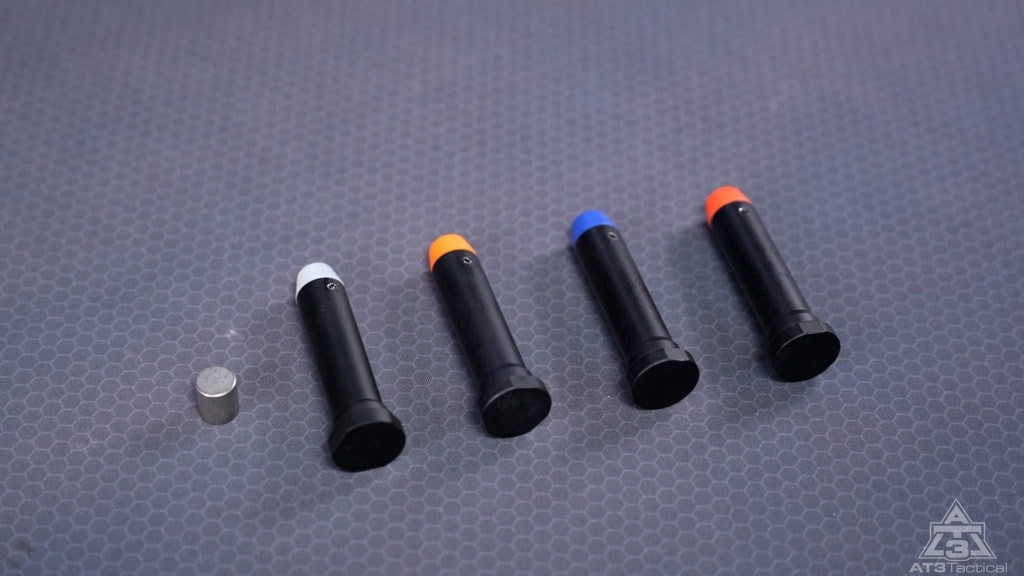
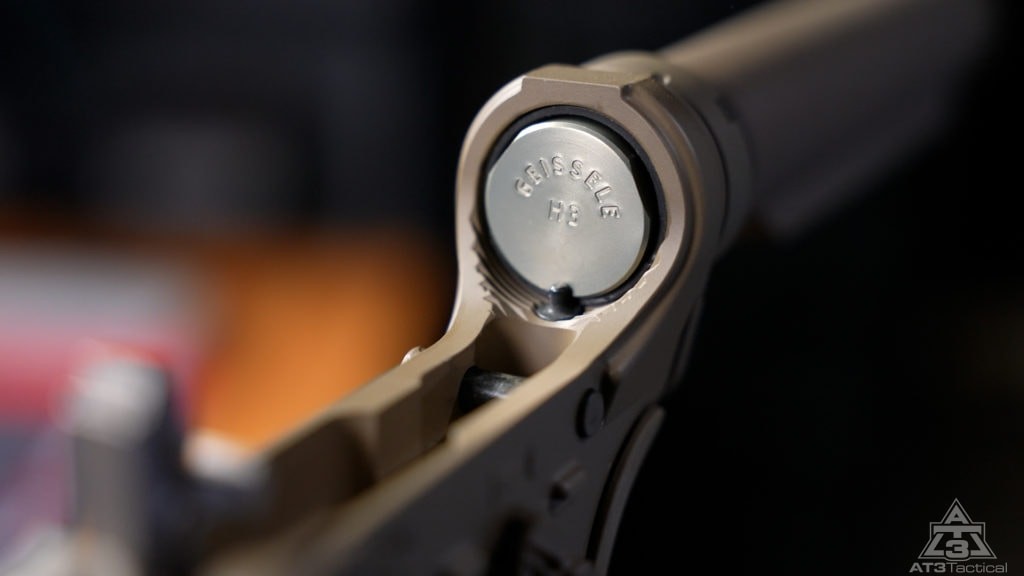
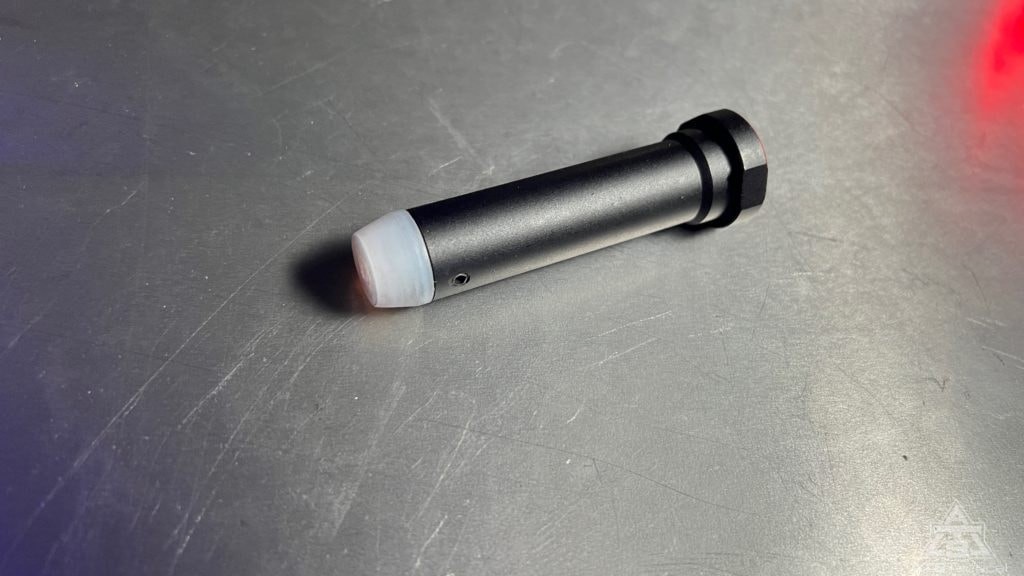
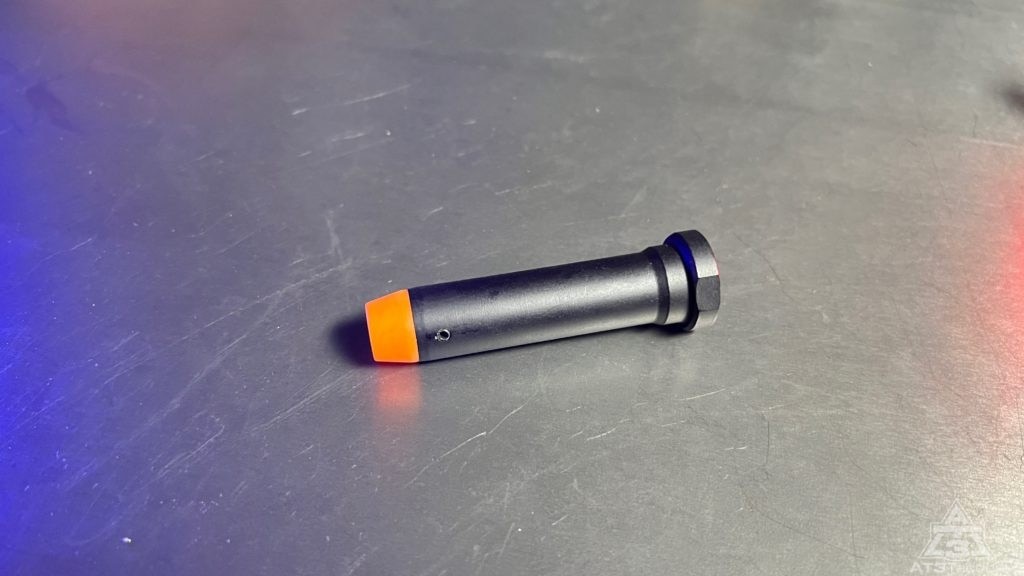
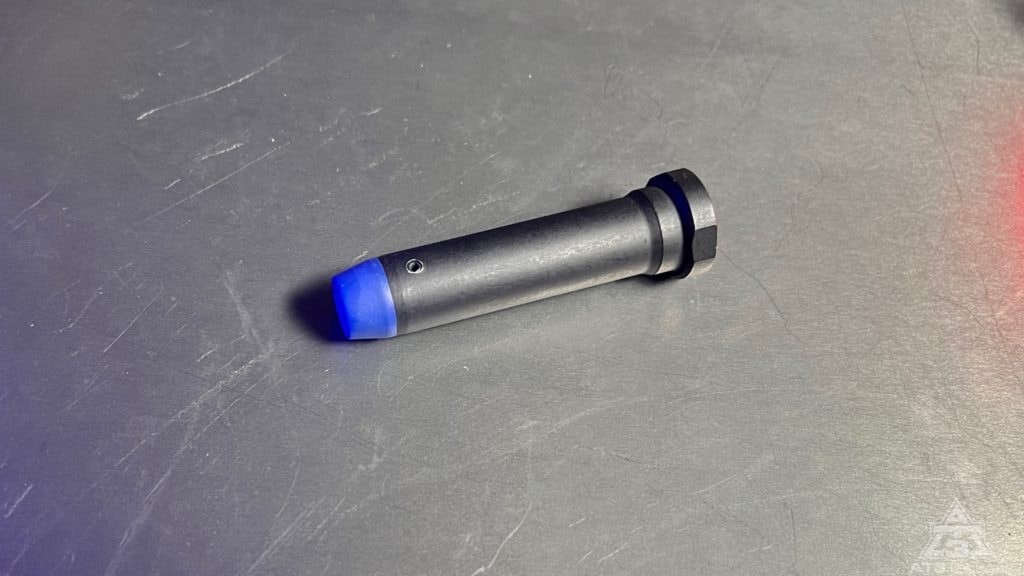
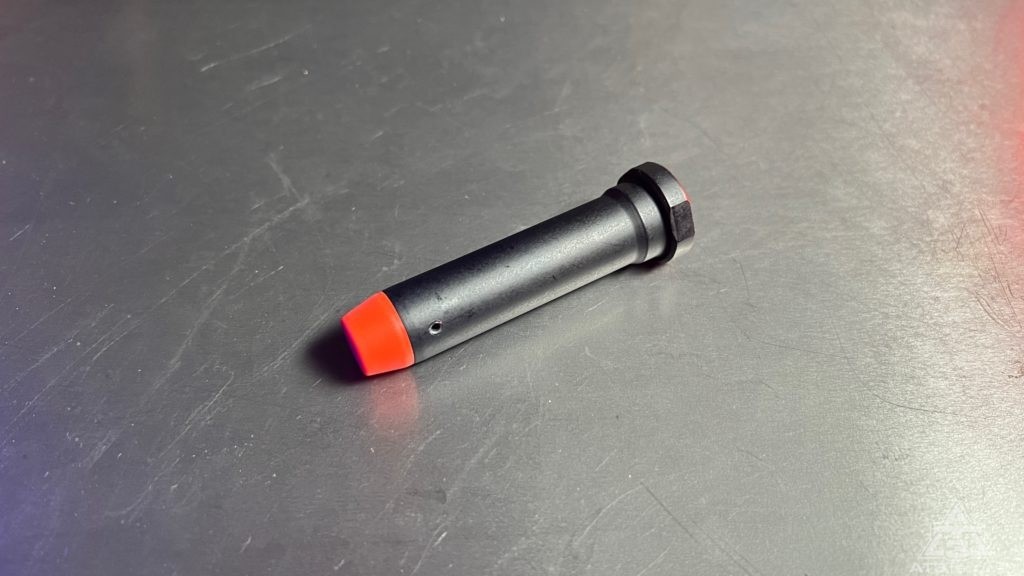
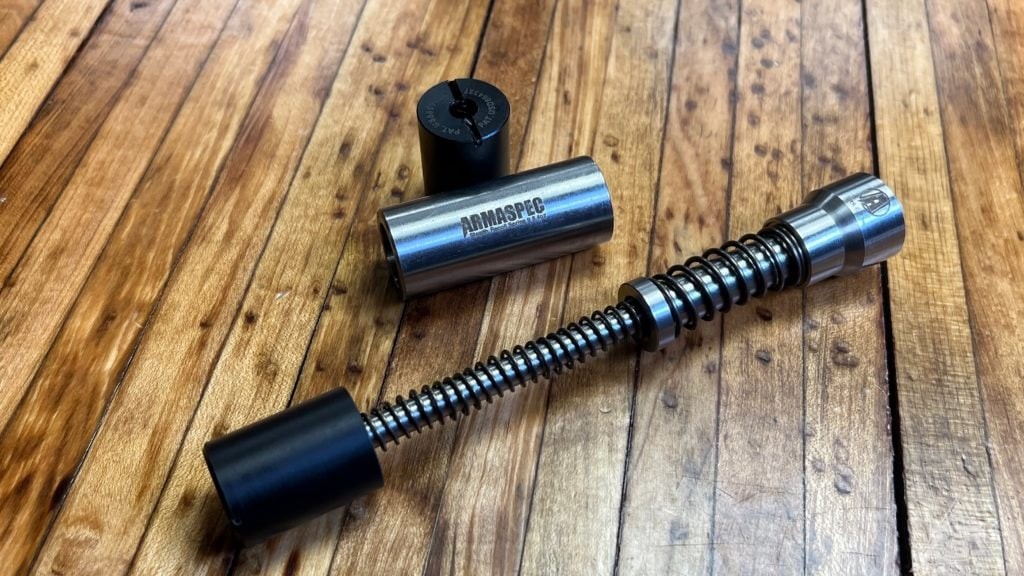
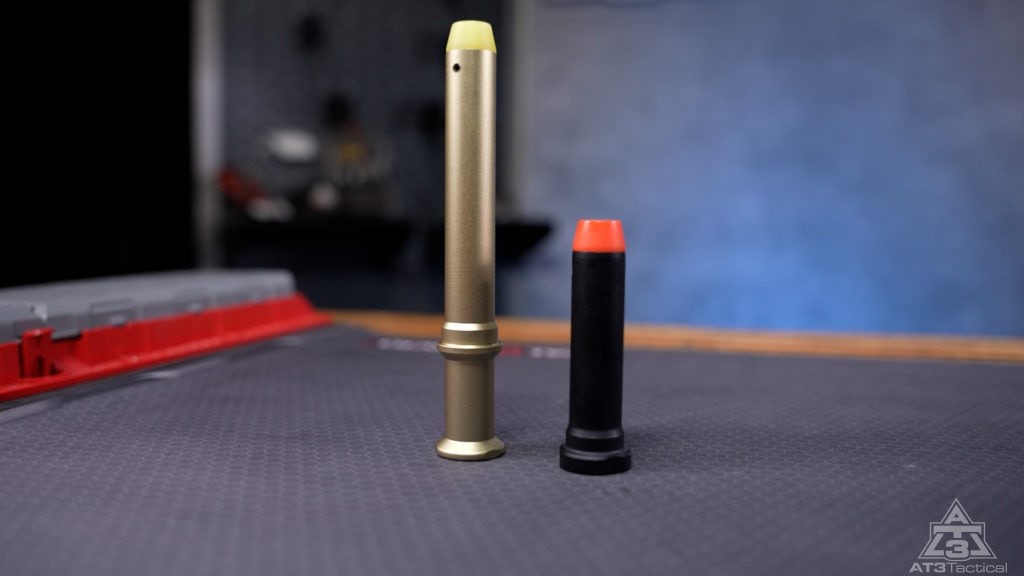
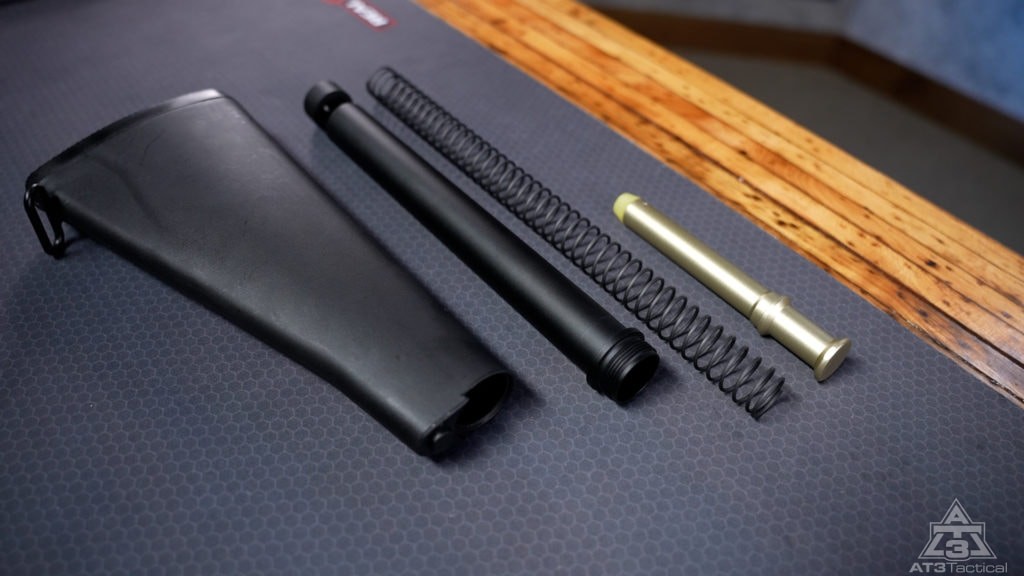
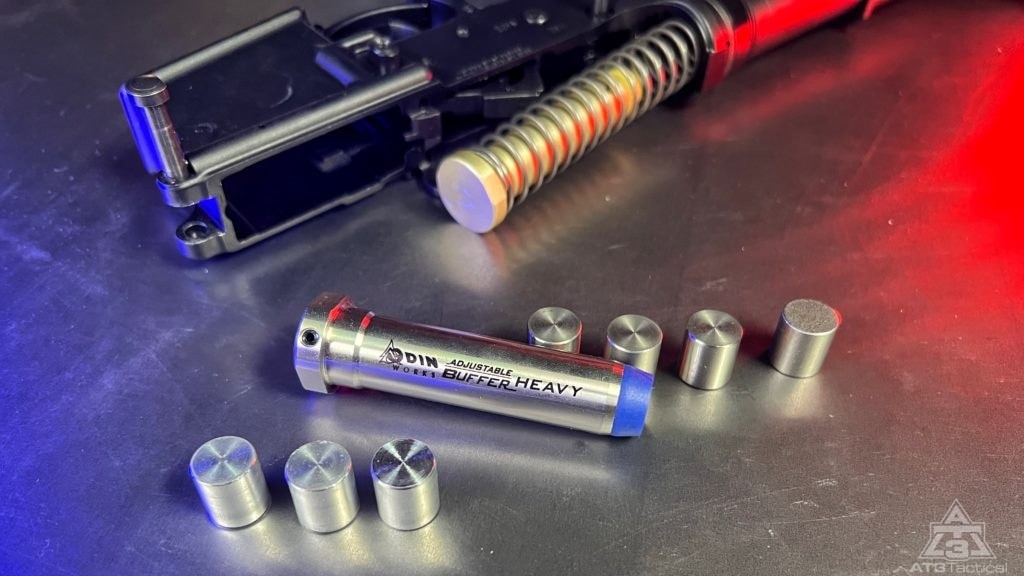

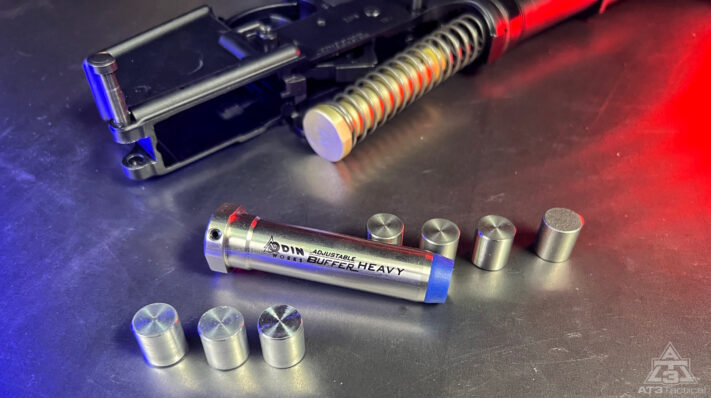

I have to use a 3oz buffer with 300BO because they don’t produce enough gas. If I use an H1 it suffers and if I use an H2 it’s a single shot.
The new Bushmaster 20 inch A2. I assume it has a full length tube. What size rifle buffer would it use?
An AR 10 System?
Hi Kevin!
Without having one of the new Bushmaster rifles on hand there is no way for us to confirm anything (for that we recommend reaching out to bushmaster) but it is most likely a normal AR-15 carbine buffer. Most fixed stock 20″ rifle length gas system rifles will have a standard carbine style buffer.
Hopefully this answered your question! Safe shooting out there!
The real term is rearward, NOT reward. Please have someone read, edit and correct before posting.
What does anyone think of the Kynshot Hydraulic Buffers?
I put one in my 9mm AR and it works great. This is the one I used: https://youtu.be/F-9WeeamH94
I ordered an AR-15 barrel that was 18″ long with a mid length gas system, the order form populated a 16″ barrel, so after I built the gun I noticed the issue.
To fix the issue I replaced one of the three buffer weights with an aluminum slug and the gun functions smoothly and reliably.
I am having ejecting issues with my 9mm build
Its a 7.5″ side charging BCA upper and a Tac-9 lower.
After every 3 to 4 rounds I am getting a stove pipe issue.
I currently have the stock 8oz buffer and using 115 grain 9mm rounds
Will stepping up to a 9 or 10 oz buffer solve the issue or using 124 grain help at all?
I’m in final stage of buying everything needed for 6.5 Creedmoor. I need two final items, & I waited last to buy these as confusion is all over the internet on advice. Buffer, & Spring.
I have an extra tubbs flatware for a 308.
Specs.
24″ bm barrel
AGB
A2 Style Fixed Buttstock
Rifle tube that came with stock.
I’m thinking 5 to 6oz buffer, under 5½” OAL because 6.5 BCG length being longer needs to travel back enough to function rifle & lock on bolt catch. If Creedmoor/308 rifle buffer too long, like the length of AR-15 rifle buffer, it could end up cracking Buttstock or worse. I’ve seen a 308 with A2 Buttstock end knocked completely off with spring hanging out. Guy at range used the AR-15 A2 Style Fixed Buttstock on a 308, & AR-15 buffer was just about ½” too long. You can use the same A2 Style Fixed Buttstock & fixed rifle tube, but spring & buffer must be changed for 308 platform.
Anyway back to subject. Any 6.5CM owners have any recommendations for (buffer weight) using an
A2 Style Fixed Buttstock?
My AGB should tune it, & will not be running silenced.
Thanks..
I have a 10.5″ 762×39 AR-15 and have been having failure to feed/eject issues. I installed a enhanced firing pin and ended up having to get a new extractor key. I’m thinking of switching to the H3 buffer and braided buffer spring. Reading it seems this might totally fix the issue. My question is can I put a A2 Buffer tube with rifle length H3 buffer and braided buffer spring on the 10.5″ upper/PSA lower or is that to short? There’s no clear answers on this subject. Thanks J3K
I have an AR chambered 7.62×39 with a 10.5” barrel with mid-length gas tube. It came with an H1 buffer and would not eject the casings. Put in a carbine buffer and it will cycle occasionally. It will eject reliably, but will not chamber another round reliably. What else should I try?
What kind of magazines are you using on that 7.62×39
Your problem is two fold first your dwell time the length after the gas port is very short. The actual gas pressure to unlock the bolt and remaining pressure in the barrel to push the round back is low because of where the-gas port is located.
My advice would be get a Flat wound spring and adjust the buffer weight down to get full stroke.
I set up all my AR’s with adjustable gas blocks, as I use suppressors on all of my setups.
With that said I shut off the gas block and open it up three full revolutions put one shell in the mag and fire the rifle down range at the target.
The mag should lock back if not open up three turns more. Do NOT exceed Eight (8) revolutions!!! Your rifle needs to be taken to a smith to have the gas port enlarged.this takes a combo of special drills and reamers plus knowledge of what needs to make sure you do Not break either drill or reamer in barrel.
Good Luck
above all have fun !!
I have at 15 diamondback pistol wanting to replace the buffer tube plug what would you suggest on a Weight would you put a standard one back in
I PLAN ON REPLACING THE STOCK ON MY 5.56 CARBINE WITH AN A2 FIXED STOCK. i AM ASSUMING THAT THE A2 STOCK WITH THE A2 BUFFER AND A2 SPRING WILL WORK OK? IF NOT, WHAT COMBINATION SHOULD I USE?
I have a 10.5″ barrel with carbine length gas tube. I have a kak flash can on it. The lower was originally for a 7.5″ barrel when I bought it. I don’t know what weight the buffer is, and have not fired it with the 10.5 barrel. What weight/buffer do I need for the 10.5 barrel, I’m shooting 223/556 55/62 grain ammo. The barrel is a 1:8 twist.
So for a 16″ barrel, cabine length gas system 458 SOCOM would H2 be the weight to go with or H3?
Your statement denies physics. All things being equal, the heavier an object, the more force it takes to move. I built and subcontracted Ar15s for LE in 90s and still build. I built an 8.5 that has malfunctioned 1 time in over 6,000 rnds. I built that at when Colt and major manufacturers along with major gun “were saying anything under 11″ couldn’t be 100%.” I presented this information online after building 2 more 10.5″ both ran 1,000 rnds no malfunction.
“But having as much weight as possible increases the “dwell time” spent by the spent ammo in the upper receiver, allowing more of the excess gas and carbon to push out (cleaner operation).”
That’s not true, at all. The bullet will exit the muzzle LONG before the bolt starts to unlock. If it doesn’t, then ALL of that gas pressure is going to blow out of the chamber, and the rifle will probably explode.
The fact is that a heavier buffer will slow down the cyclic movement of the bolt, but will NOT alter unlocking in a standard gas operated system.
Forgot to mention I also tried a flat buffer spring that someone had on hand in the 24″.. made no difference.
I have two ar-15 builds, one a 20″ and the other 24″. Bought them from the same place; they have the same gas block and tube, bcg, and standard buffers for each. The buffer springs are same length and coil number, but one is piano wire and the other not. Both rifles are well lubed, and both have been short stroking from the outset.
I have tried six different ammos, w/ one cycling fairly well in the 20″, but still not locking back after the last round. None cycle properly in the 24″, and observers can see that the bolt isn’t coming all the way back. The 24″ will often cycle after the first round, but not for any other round in the magazine, requiring that I hand charge it to fire. Neither rifle will even eject steel ammo, but with brass, both rifles eject all rounds into a very small pile at 4 o’clock. I have also tried 3 magazines in each rifle, w/o change.
I measured gas port diameter, and they are correct, .096 for the 20″ and .089 for the 24″ (although this is a bull barrel, so maybe it could be enlarged a little). I have reinstalled the gas blocks and tubes and verified that the systems are tight and that the bcg is tight.
I considered pulling one of the 3 weights from the standard buffer and replacing it w/ a wad of some sort, but I don’t think that’s a good idea. Springs are cheap, so that’s what I’ll start trialing next (ordered 6 different brands for under $5 each, so I’ll get some variation for trial). I watched a video on buffer springs, which stated that in a standard spring, 3.6 coils generates about 1 lb. of force. So I figured I’d start by cutting 1 lb. of force off each spring, then continue cutting in 1/2 lb. increments, until it will cycle everything, and lock open after the last round.
If that doesn’t work, I don’t know what else to try. I’ve ordered a couple adjustable gas blocks, but as I understand it, that’s to adjust down in gas pressure. I don’t see how they could help in any way if it’s undergassed. It isn’t magazine, it isn’t ammunition, it doesn’t seem to be gas port, gas block, gas tube, or bcg gas key related, already has the lowest weight standard buffer. Sure hope it turns out to be solvable by shortening the springs.
I have an AR 10 “matched” upper and lower in my 6.5 Creedmoor from Palmetto Armory. It fails to eject consistently, doesn’t feed reliably and when it ejects is to the 1-2 o’clock position. I’m using S&B 140 gr FMJ BT ammo. I keep hearing from folks at the range that it’s over-gassed. Can this be corrected with a heavier buffer?
Any place sell REASONABLY priced weights to tune buffer weight up/down?
Good luck finding that!!
What buffer weight is recommended for a full auto 556
Light pistol carbine I believe
4oz linear alignment recoil buffers work f’ing fantastic. For the application in question.
Palmetto lower, 24 inch 223 wylde bull barrel, it will eject but not pick up a new shell. Buffer suggestions?
I have the same issue but it only happens when I use my nickle boron bolt
Check gas key on BCG, the slick surface of NB demanded restaking the gas key screws. They looked good but were coming loose after several hundred rounds. This happened to 2 of my NB BCG.
EABCO sells a 3 piece tungsten weight set for $23.
I have your 11.5 upper ,what buffer should I use?
Built one, using standard carbine buffer, I built a 8.5 6 years ago, use h2, 6,000 + rounds, 1 malfunction. 10.5 barrel some like H2, some standard carbine buffer. I keep h2 and standard carbine on hand. After a build, I take both and rapid fire 100 rnds through rifle/pistol with cheap steel case. then 100 milspec. I then shoot for accuracy and sight in. 100% function is only accepted. Sub 1.5 accuracy with match grade. If not I diagnosed and repair.
Simply increasing the buffer weight of the reciprocating mass on your AR 15 can provide noticeable benefits, including reducing felt recoil and muzzle movement and providing additional mass to aid feeding during the loading cycle.
What set up would you use doing a NON FIXED regular 6 position tube and the gun has an 18″ bbl. with a rifle length gas system? ??
Will a ar 5.56 carbine lenght with 16″ barrel use the same buffer as, say, the same ar with a 10 1/2″ or 12 1/2″ barrel..
It could, but you might also need a heavier buffer. If you use a lightweight carbine buffer in an over gassed short barrel, then you’ll have very harsh recoil.
On the other hand, if you’re short barrel is using an adjustable gas block, then hypothetically, you might even want a lighter buffer than standard.
I take issue with this assertion: “The impact of the gas charge of a .458 SOCOM with a muzzle energy of 2,700 ft. lbs. greatly exceeds that of .223 (1,200 ft. lbs).” No, it really doesn’t. While there is more powder being burned, that doesn’t necessarily translate into more port pressure, because the larger bore also has a larger expansion ratio– in which case the port pressure likely will drop. And of course, the pressure curve of the powder also matters.
The big bores definitely have more recoil momentum and energy. But that’s not the same as having more “gas charge” which they likely do not, because the port sizes will be chosen to keep port pressures in the same range as the 5.56 and thus the buffer and cycling action cannot distinguish between them.
I have a ar15 that is not locking back after the last round is done it extracts the bullet ok but will not lock back I think it might be my buffer and spring will be possible to try a lighter buffer and spring ro see I’d ir would help
I have an MGI hydra package 001 that has the conversion kit from 223/5.56 to 300aac to 9mm to 7.62×39 as well i have added the franklin arms binary trigger im having problems with the 9mm getting jammed at 45 degree can anyone suggest best opinion for buffer and weight that will work for everything haven’t tried the other 2 calibers yet but definitely a fun gun to shoot
For an AR-10 which short strokes, does it need a heavier buffer or lighter?
Fred, give us more information on your AR-10 setup? My 20″ AR-10 has been flawless running a rifle length buffer system.
That said other issues may be causing your short stroke issues. Gas port or gas block obstruction, gas leakage, bad gas rings on the bolt?
You can try a lighter buffer but the problem probably lies in your gas system.
Having the same problem with my AR10 20″ shooting 308 168 GRHPBT at 2,680 FPS with a surefire muzzle brake. The brass ejects perfect but it seem the bolt is not coming back far enough to get behind the next cartridge so it can be chambered. The manufacturer of the weapon has asked me to take on of the six metal slugs inside the buffer tube and see if the cures the problem. Maybe this will work for you too. If anyone has done this please let us know.
Your buffer spring may be too long.
AR 15, 16 inch barrel in .450 bushmaster. With a 2.8 oz. buffer. Problem is it will not feed off of the magazine. The spent cases eject out at 1-2o’clock. The cartridge is jammed at a 45 degree angle, nose up. What buffer would you suggest? It seems that it cycles faster than the magazine can act .
Ken,
I would think you are actually under gassed with what you are describing. You have a very light buffer for the .450. I would tend to think you would be slamming the bolt back with each shot but it appears the opposite is occurring. You are getting light ejection and the bolt is not going back far enough to catch the next round. I would also expect the bolt will not lock all the back after the last round is fired. So…IMO…your buffer spring is too heavy or you are under gassed or shooting low velocity rounds. Hope this helps.
Toby
As Toby suggested, the bolt should lock back after the last round is fired, if it doesn’t it’s under gassed. To correct mine I had to drill the gas port slightly bigger to get my 450 to cycle properly. This will be trial and error until you get it to cycle properly, remove the gas block and using wire drills find the smallest size that won’t go in the hole then drill the hole to that size reassemble and try it, if it cycles properly you’re good to go if it doesn’t repeat until it cycles properly, if you drill the hole too big and it’s over gassed put an adjustable gas block on it to tune it.
Mine is a 450 carbine, H2 buffer (if I remember correctly), with a standard carbine buffer spring.
Ken,
I am having the same issue. what did you do to resolve the issue?
That’s a magazine issue, feed lips need tweaking up if hitting below the barrel.
5/6 oz min buffer, shells should eiect at 3/4 oclock.
I built an AR-9 platform “pistol”. Using a Spikes AR-15 lower, and 10.5 ” Foxtrot Mike [FM] 9mm upper.
On FM’s recommendation, I purchased a 6.4 oz. buffer weight for the spring assembly in the adjustable stock. This weight for the spring (6.4 oz.) was recommended because my 9mm pistol build is “blow-back”, and not gas-assisted.
My question is this!
If I purchase a 5.56/.223 (Wylde), 16″ barrel,…will the 6.4 oz. buffer enhance, or deter from performance?
And will it matter if the 5.56/.223 Wylde has a shorted gas tube,…or a longer one?
[I was looking at some BCM uppers]
Any comments or suggestions would be greatly appreciated!
Thanks!
Mike
6.4 ounces is extremely heavy for a 223 upper. It might work, and won’t hurt to try. What case scenario, you need a new buffer. A shorter gas tube is more likely to be “over gassed” and need a heavier buffer. However, do not choose your barrel based on your buffer. Barrels are expensive, buffets are cheap. A longer gas system will be softer shooting. Just but a new buffer.
“A heavier buffer takes longer to move, slows down more quickly”.
Please explain.
they are referring to acceleration. More mass equals slower acceleration
Due to the mass involved it will take more gas pressure to move the buffer, and since the spring is impeding the buffer movement it will stop sooner and return to battery. The amount of time required is based upon the original length of the gas pulse, which is based upon the gas tube length vs Bbl length. If you have 4″ of Bbl after the gas port you get a specific duration of high pressure. Change the Bbl length OR the bullet weight and you change the “dwell time” of the HP pulse. In a 9mm pistol that short strokes using 115gr bullets you can often get improved performance by changing up to 124gr bullets to increase the HP dwell time by the few micro(nano)seconds needed to complete cycling the slide and ejecting/loading the next round. The same applies to any gas operated firearm, whether blowback, direct impingement, or piston activated. Timing issues apply to them all. That’s why there are so many different buffer weights and lengths and springs available. (Springs come in different weights too) Hope this helps.
Because physics.
Objects at rest remain at rest until acted on. More mass requires more force to move. The amount of time being referred to here is very small but makes a difference.
Yea. That was just one of several things i read that didnt makes any sense. And you gotta love all the people trying to explain mass to you. To everyone else trying to explain…..maybe reread what he said. With more mass, it takes longer to accelerate and to decelerate. Not longer to accelerate and quicker to decelerate. The guy two answers below who gave the super long answer trying to make thatmake sense “because the spring was designed for the lighter weight, blah blah, it stops the extra mass quicker via blah blah.” Dude…. your not smart and you don’t know what your talking about. With all else being equal, increasing the mass will yield slower acceleration and deceleration as a result of the masses effect on momentum and as well as inertia. The spring, which hasnt changed, is irrelevant. Its providing the same force it was before …..how is it going to stop More mass QUICKER? Id also like to know why a shorter barrel on a 9mm ar, which is blow back with no gas system, would yield a higher more violent recoil. With gas systems this is true, the shorter the barrel the closer to the breach the gas block is, i.e. more force pushing back. With a blowback the shorter the barrel the less force for a shorter duration. A 4 inch 9mm barrel vs a 16 inch9mm ar barrel…..the16 inch will create much more blow back. He states the opposite is true…
Battle arms development
I’m trying to find the shortest ar-pistol buffer tube, that uses the carbine buffer? All I need is the tube, I don’t need a new spring an buffer! Who would be recommended for this possible purchase?
maybe sb tactical buffer tube.
SB’s tubes are actually a little longer then everybody else’s right on 8″ when most shockwave tubes are around 6-7″
Be a little cautious, if you measure the buffer tube from the outside it may very well be longer/shorter. But it’s the inside length that matters. I had two buffers where one seemed longer than the other. But a quick measurement on the inside revealed the “longer” one just had a 3/4” plug in the end. So internally they were identical in length.
I have 2 ruger556mpr rifles 18 inch barrel rifle length gas. Both are over gassed to the point of ejection is at 1 to 130 when using 556 m193 I tried different springs and buffer weights until I got 3 to 4 o’clock ejection. The sprinco red extra power spring with h2 buffer is what it took